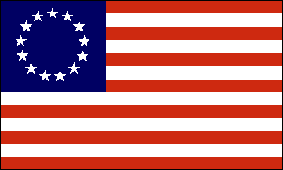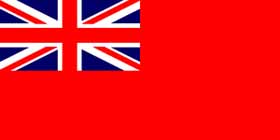Colonial Wars |
American Wars |
Link To This Page — Contact Us —
The Battle of Charlotte
September 26, 1780 at Charlotte, North Carolina
  |
|||||||||||||||||||
|
On the 24th Davie's patrol's had learned Cornwallis was in motion on the Steele Creek road to Charlotte. Sumner and Davidson meanwhile, left Charlotte, and retreated on Phifers road marching towards Salisbury. Davie with 150 dragoons and mounted infantry, with some volunteers under Maj. Joseph Graham, skirmished in Cornwallis' front, and on the night of the 25th captured some prisoners. By midnight he had taken post at Charlotte, 7 miles from where Cornwallis camped that night, being reinforced during night with 14 volunteers. The next morning, British light troops, with British Legion under Major George Hanger, and followed up by Cornwallis’ entire army, advanced.
At this time, Charlotte was a small village of 20 homes and a courthouse. Col. William Davie and 20 Continental dragoons were waiting to challenge the british threat. They were posted behind a stone wall near the courthouse. The rest of Davie's command was along the Steel Creek Road, which led to the stone wall. Maj. George Davidson commanded 2 companies of riflemen, about 70 men, and Maj. Joseph Graham commanded a small group of Mecklenburg militia. Hangers cavalry was ambushed by riflemen as they passed by some houses, and being then charged by Davie's cavalry, were driven back in disorder. British light infantry Legion light infantry, pressed forward, and Davie withdrew. Hanger’s cavalry regrouped charged in column again but were again received fire from the militia, which hurled them back in confusion. Even so, the British Legion infantry, which Cornwallis had reinforced with Webster’s 23rd Regt., began to turn Davie's flank, and he was forced to pull back.
The British followed them with caution for some miles, and discovered the American camp at Charlotte. Hanger sent his light infantry, commanded by Lt. Col. James Webster, forward to clear out the Americans from their positions along the fences by the road. Webster's attack against forced the Americans to leave the fences along the road and fall back to the stone wall. Hanger personnaly led his cavalry against the 20 Continental dragoons. Davie's troops drove the British back in the first assault. Hanger then led a second cavalry charge againt the stone wall and was again stooped and forced back.
According to Davie he 5 killed, 6 wounded, including Maj. Graham. The British lost 44 killed and wounded, Hanger being among the wounded. British lost 14 wounded according to Tarleton, including Hanger. Rankin states the British lost 20 killed and wounded a number more.
Tarleton:
“On the 22d, Earl Cornwallis directed the British legion and light infantry to cross the Catawba at Blair's ford, in order to form the advanced guard, for the immediate possession of Charlotte town. The junction of the light troops had been prevented for a few days, by a violent fever which had attacked Lieutenant-colonel Tarleton, and which yet disabled him from holding his situation when his regiment moved forwards. Several convalescent men of the army having relapsed, the 71st, under M'Arthur, was left near Blair's mill, to afford protection to the sick, to cover the mills in the neighbourhood, and to hold communication with Camden, till the arrival of the additional supplies. Earl Cornwallis moved forwards as soon as the legion under Major Hanger joined him. A party of militia fired at the advanced dragoons and light infantry as they entered the town, and a more considerable body appeared drawn up near the court house. The conduct of the Americans created suspicion on the British: An ambuscade was apprehended by the light troops, who moved forwards for some time with great circumspection: A charge of cavalry, under Major Hanger, dissipated this ill-grounded jealousy, and totally dispersed the militia. The pursuit lasted some time, and about thirty of the enemy were killed and taken. The King's troops did not come out of this skirmish unhurt: Major Hanger and Captains Campbell and M'Donald were wounded, and twelve non-commissioned officers and men were killed and wounded.”
Pension statement of Henry Connelly, of Guilford County, N.C.:
"At the time of approach of Cornwallis to Charlotte, under Colonel Davie the troops posted themselves to meet the enemy. On the enemy's approach the companies commanded by this applicant received the first onset from Tarleton's Cavalry, and the firing became general on the left wing. The troops were commanded by Colonel Davie in person, and for three times we succeeded in repulsing the enemy. At length we had to yield to superior numbers. In this battle we had many men killed, several from under this applicant."
Hanger:
“I acknowledge that I was guilty of an error in judgment, in entering the town at all with the cavalry, before I had previously searched it well with infantry, after the precaution Earl Cornwallis had given me. But when I risked so few lives in drawing the fire from the enemy, I trust that, in some measure, palliate the fault. None but the advanced guard were with me till most of the enemy had given their fire.
A part of the cavalry in reserve, whether from perceiving the enemy planted behind the houses, and imagining they were impervious to my view, (which they were, until I was considerably advanced into the town), or for other reasons best known to themselves, at this advantageous instant of time did not advance. My intent of charging through the town, after having drawn the enemy's fire, now became too late and too dangerous; and I was happy to draw the cavalry off as quick as I could, and with so trifling a loss.
The Stricturist [R. MacKenzie] says, ‘Lord Cornwallis being dissatisfied, ordered the light infantry to dislodge the enemy.’
This I positively deny -- the truth stands thus:
We had a part of the legion infantry mounted on inferior horses, to enable them to march with the cavalry, ready to dismount and support the dragoons. These infantry, of their own accord, very properly had dismounted, and formed before the cavalry were near out of the town. I ordered them to take possession of the houses to the right, which was executed before the light infantry, and the remainder of the legion infantry, came up, who were left behind with Earl Cornwallis to march at the head of his column.
I appeal for the truth of this assertion to Captain Campbell, who, as their senior Captain, commanded them, came running up to me, when our dismounted infantry had advanced, and in a most friendly manner intreated me not to impute any blame to him, for not running up with the remainder of the light and legion infantry instantly on the first hearing of the firing; for Earl Cornwallis had ordered him to keep them with his Lordship. At this moment Earl Cornwallis appeared in sight, having been but a very short distance behind with the army, and ordered the whole to halt. The enemy had by this time all quitted the town for the woods and swamps close behind it. The whole light troops now advanced. You will please to recollect, Captain Campbell, whose name I have just mentioned, was not wounded in the town, but above half an hour afterwards, and full one mile further one.
It was a trifling insignificant skirmish, which no person but the malevolent Stricturist (happy at all times to detract from public or private honour) would have attempted to have made of such magnitude, or even have ever mentioned.
It would have been but liberal and just in you to have related the conduct of the cavalry that whole day; in the afternoon, as well as the morning. These troops, whom you say, neither my intreaties, nor the exertions of their officers, could induce to face the American militia, were left unsupported in the evening, under my command, by Earl Cornwallis's express orders, when he took post at Charlotte Town, and left me to engage a corps of state horse and mounted crackers that had been very troublesome the whole day, perpetually skirmishing and harassing the front of our line of march. This service they performed with spirit, alacrity, and success. We had not moved on above one mile in search of the foe, when we fell in with them, attacked them instantly whilst they were attempting to form, dispersed them with some loss, and drove them for six miles, forcing them even through the very pickets of a numerous corps of militia, commanded by General Sumner; who, supposing a large part of the army to be near at hand, broke up his camp, and marched that evening sixteen miles. Lord Rawdon is well acquainted with the truth of my statement of this affair. Let the whole army judge, whether it was liberal, honourable, or just, thus to suppress one part of the conduct of the cavalry on that day, which certainly gained them some credit; and whether it does not manifest the extreme of rancour and malice, thus to dwell upon, and give an air of considerable consequence to a trifling skirmish in the morning, not worthy to be mentioned, or even thought of after it was over, by an officer acquainted with active service.”
